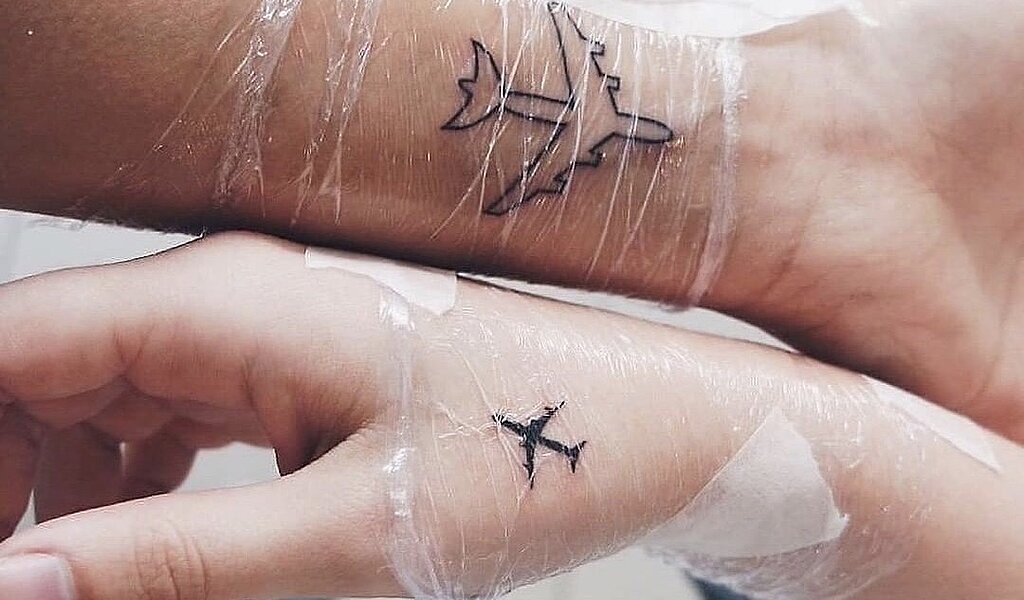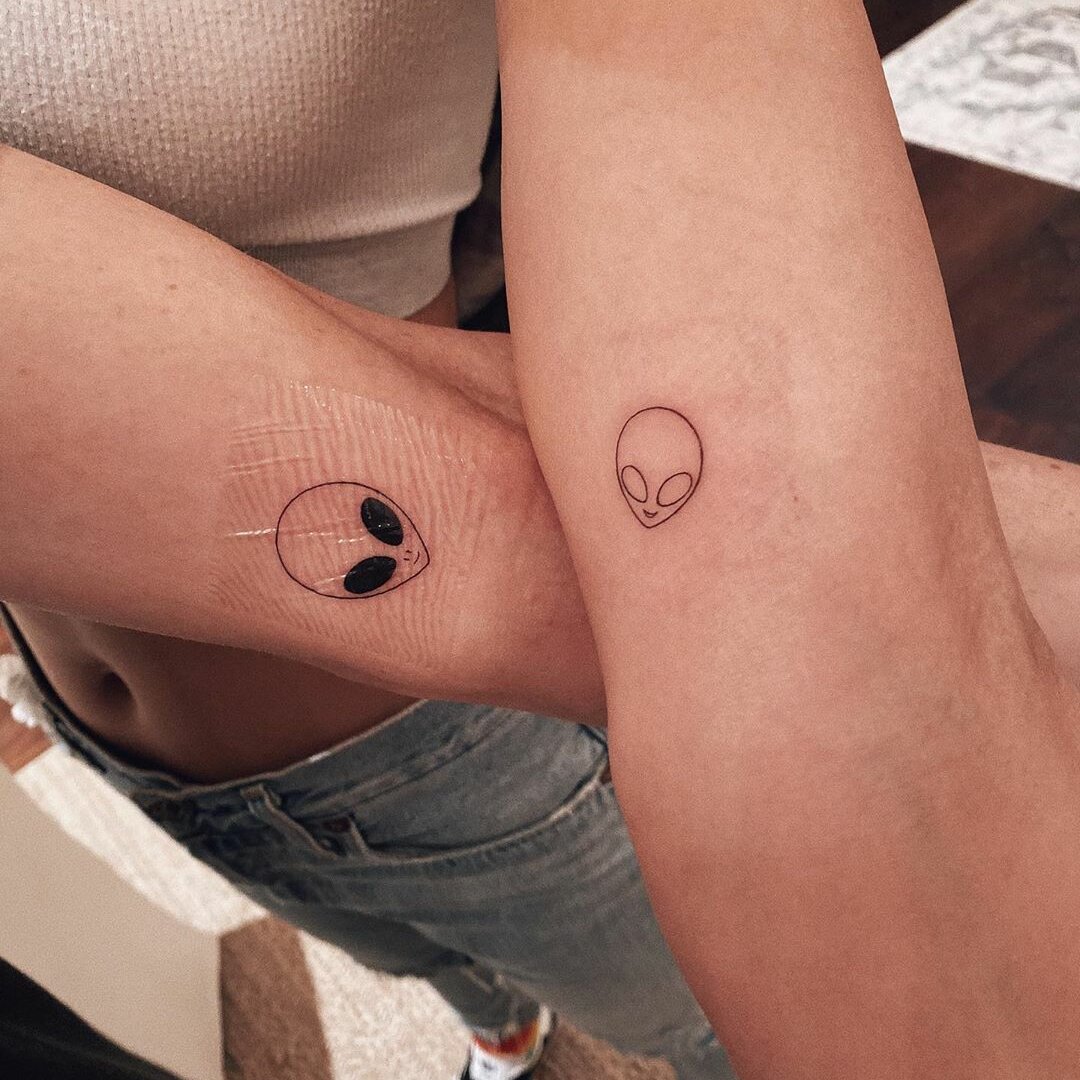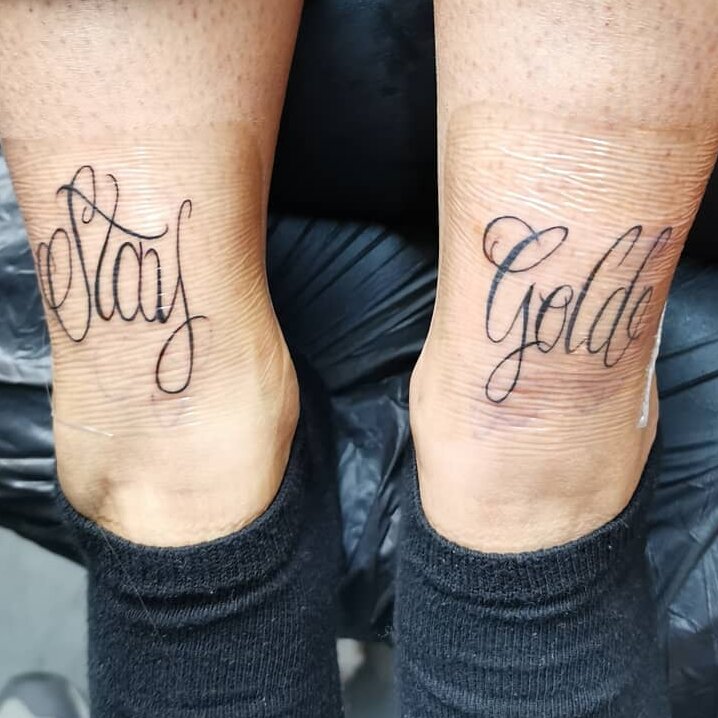

After your tattoo artist has finished his work of art, the tattooed area is first disinfected, carefully wiped with a sterile cloth, smeared with a wound and healing ointment and finally carefully wrapped in foil. This is usually actually conventional cling film, as you get them in any supermarket. Wrapping the tattoo in a protective foil is necessary because your tattoo is simply an open wound at this point. By "foiling" you can avoid that foreign bodies like bacteria get into your wound. This measure is therefore (primarily) to protect against infection.
In the following paragraphs we explain to you when you should wrap your tattoo in foil and when you can also give yourself and your tattoo a soothing break to breathe.
After the appointment:
We recommend that you change the foil after about three hours. Remove the foil, wash the tattoo without soap, shower gel or similar with lukewarm water and then apply wound and healing ointment again with disinfected hands before you wrap it in foil again. The skin is irritated and open and needs about a day to close up again. Secure the foil with conventional bandage tape. The film acts as a protective layer and allows the skin underneath to relax.
At night:
While sleeping you should wear a fresh foil in any case. Not only that the freshly tattooed area releases all kinds of fluids (blood, paint, wound water, ...) and you stain your bed linen in this way. Also in bed it is important to protect the wound as best as possible from intruders like mites, dust or bacteria. After all, you unconsciously turn around in your sleep and possibly lie down on your tattoo or the bedspread does it.
The next morning:
If possible, choose loose, comfortable clothes that are not too tight-fitting for the day after. Basically, you should also wash off your tattoo the next day as described above, apply cream and wrap up as soon as you leave the house. If you stay at home and have no contact with other people, let fresh air get to your wound as long as possible.
Among people and in sports:
If you go out with people, wrap your tattoo in foil again in any case, so that nothing gets inside. The same applies to sports activities. Especially if you do contact sports. However, it is best to completely avoid such activities in the first time. Because by blows (eg in martial arts or even handball, football, etc.) on your tattoo, your motif can not only suffer optical damage - it also really hurts.
Pay attention to the surroundings:
Depending on where you go with your newly tattooed area, you should protect your motif. This is especially true if you hang out in dirty environments. This starts with going to the public toilet and ends for example at dirty workplaces such as garbage dumps or the like.
How long do I have to wrap my tattoo in foil?
There is, as so often, no ultimate right answer to this question. Because here, too, it depends on the texture of your skin. While some can already stop after a few days to wrap their tattoo in foil, others need up to four weeks until their tattoo is completely without. Basically, you can assume that you are not doing anything wrong if you foil your tattoo for at least one to two weeks according to the criteria described above. The absolute minimum duration is 24 hours. We strongly advise you not to foil your tattoo at all. Due to the already mentioned emissions, crust formation occurs in addition to the known risks with air drying.



Kommentar schreiben
Kommentare
Keine Kommentare